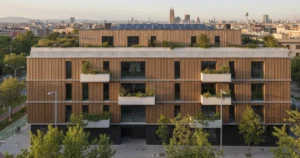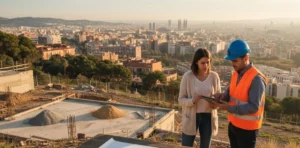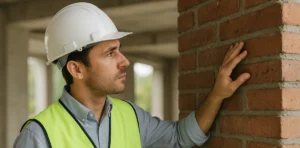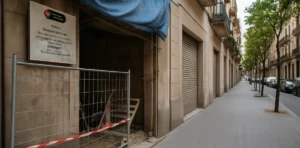Table of Contents
Biografía de Mies van der Rohe: Un Visionario del Siglo XX
The Early Years (1886-1913)
Ludwig Mies was born in Aachen, Germany, in 1886. From a young age, he showed an interest in construction, working in his father's marble quarry. With no formal academic training in architecture, he began his career as an apprentice in design studios.
Influences and Early Career (1913-1930)
Mies worked with Peter Behrens, one of the pioneers of industrial design and modern architecture, where he met Walter Gropius and Le Corbusier. During this period, he gravitated toward the use of steel and glass as essential materials.
In the 1920s, he became a key figure in the Modern Movement, being part of the Bauhaus and promoting a rationalist style with geometric and minimalist structures.
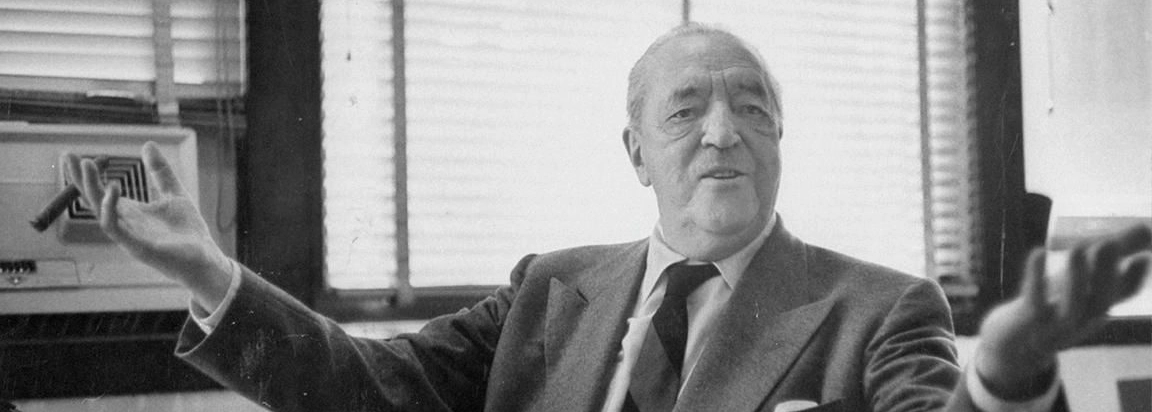
La Filosofía Arquitectónica de Mies van der Rohe
Less is More: The Quest for Simplicity
Mies van der Rohe believed that architecture should be simple, functional, and free of unnecessary embellishment. He used modular structures with industrial materials like steel and glass, creating open, airy spaces.
Transparency and Relationship with the Environment
One of the key principles of his designs was transparency, using large expanses of glass to connect interior spaces with the exterior. This can be seen in works such as the Barcelona Pavilion and the Farnsworth House.
Steel Frame Structures
Mies developed a revolutionary technique using exposed steel structures, allowing for the creation of buildings with fewer columns and more flexibility in interior design.
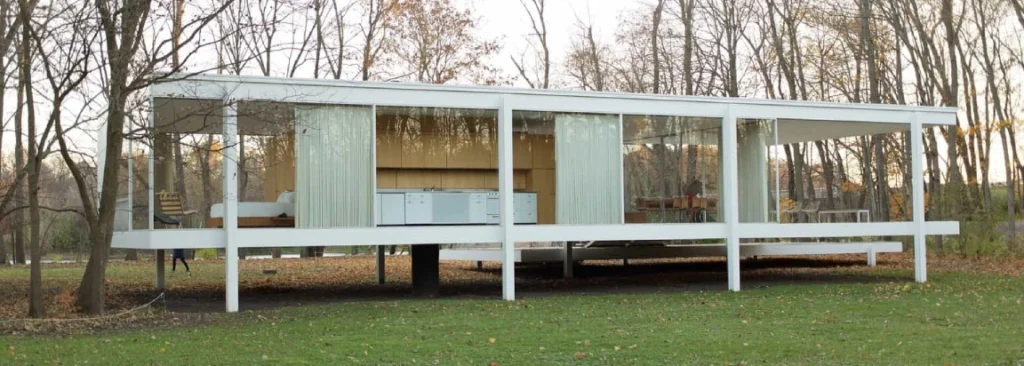
Obras Emblemáticas de Mies van der Rohe
Barcelona Pavilion (1929): A Revolution in Modern Architecture
Designed for the 1929 International Exhibition, this building is one of his most iconic works. With walls of marble, glass, and steel, the Barcelona Pavilion redefines architectural space with its fluidity and minimalism.
Key Features:
- Use of fine materials such as travertine marble and onyx.
- Open spaces without visual barriers.
- Structural simplicity with an elegant design.
Farnsworth House (1945-1951): Transparency and Nature
Located in Illinois, USA, this house is a perfect example of his concept of "universal architecture", with a steel and glass structure that allows for a complete connection with nature.
Key Features:
- The building is elevated on stilts to prevent flooding.
- Large windows maximize natural light.
- Open and functional design with no interior walls.
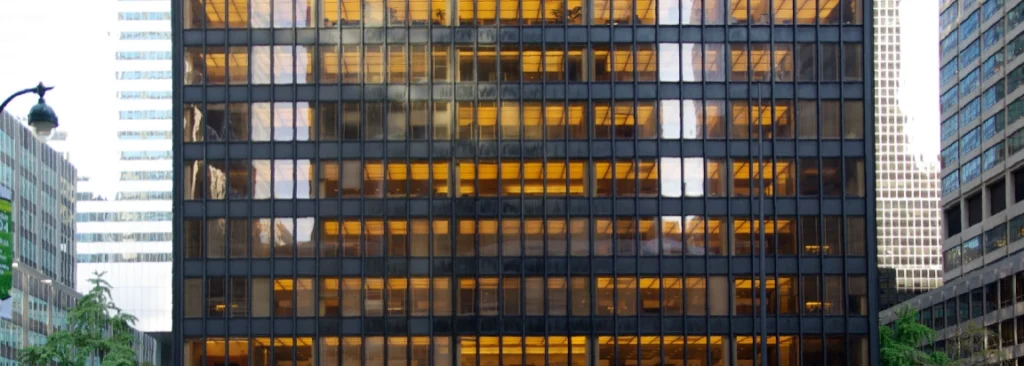
Seagram Building (1958): Icon of the Modern Skyscraper
Located in New York City, the Seagram Building is considered one of the most influential skyscrapers of the 20th century. With its bronze and glass facade, it set the standard for modern corporate architecture.
Key Features:
- First tower with an exposed steel structure and glass facade.
- Minimalist design with a public plaza at the entrance.
- Use of high-quality materials and harmonious proportions.
Lafayette Park (Detroit, 1955-1963): Functional Urbanism
Mies applied his architectural principles to urban planning with Lafayette Park, a residential complex that integrates nature and functionality in a low-visual-impact housing environment.
Key Features:
- Efficient use of space with low-rise buildings.
- Large windows to maximize natural light.
- Integration with the natural environment through gardens and green areas.
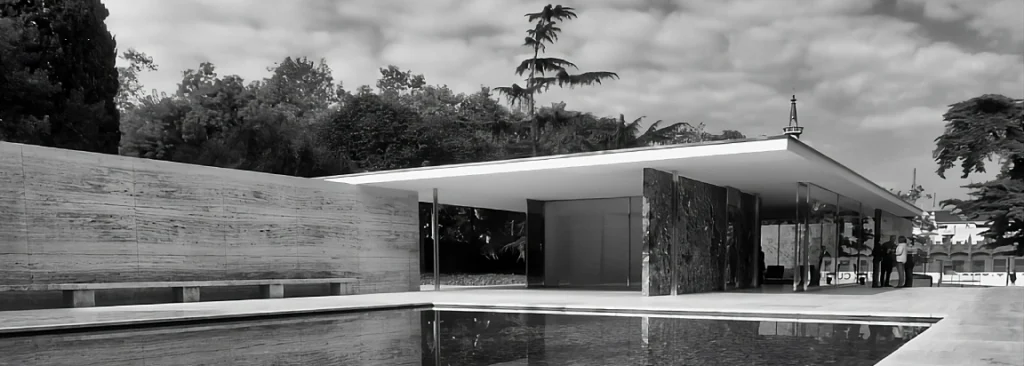
Mies van der Rohe y la Influencia en la Arquitectura Moderna
The International Movement
Mies's style influenced modern architecture, establishing the International Movement, characterized by the use of steel and glass, the absence of ornamentation, and the priority of functionality.
Impact on Contemporary Architecture
Many architects have followed his legacy, applying his principles to residential, commercial, and urban buildings. Examples of his influence include:
- Norman Foster and his use of steel and glass in the Hearst Tower.
- Richard Meier and his emphasis on pure geometry and light.
- Tadao Ando and his quest for spatial simplicity.
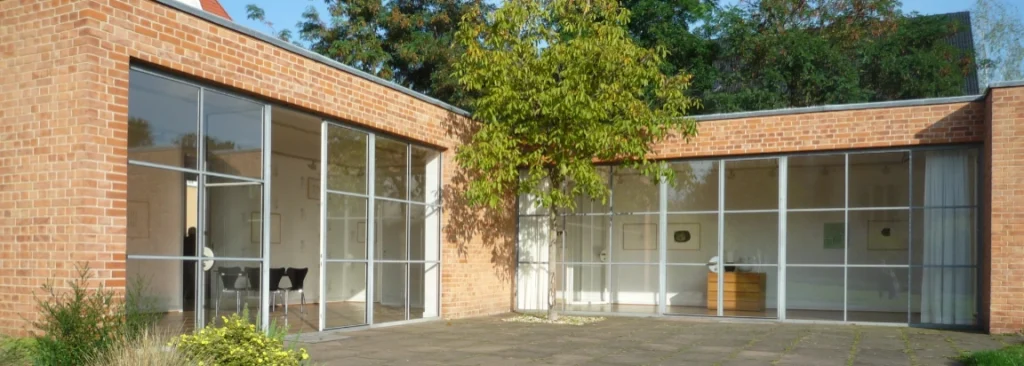
Frases Célebres de Mies van der Rohe
Mies not only left an architectural legacy, but also phrases that summarize his philosophy:
- Less is more – The essence of her minimalist approach.
- "God is in the details" – The importance of precision and quality in design.
- «Architecture is the will of an era translated into space» – His vision of design as a reflection of society.
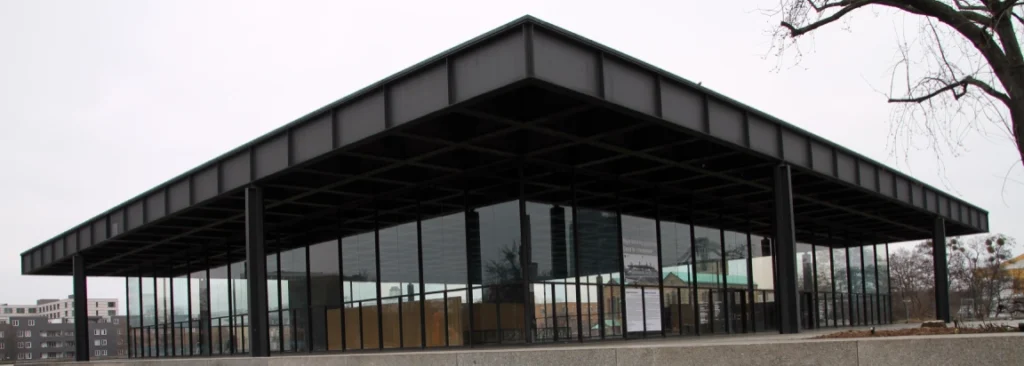
Conclusión: El Legado de Mies van der Rohe
Mies van der Rohe transformed architecture with his vision of minimalism and functionality. His works, such as the Barcelona Pavilion, the Farnsworth House, and the Seagram Building, remain benchmarks in modern architecture.
His legacy lives on in contemporary architecture, influencing generations of designers and architects who seek harmony between form, space, and materials.
If you're passionate about architecture, learning about his work is essential to understanding the evolution of modern design.
Do you want to learn more about architecture?
Do you want to learn more about architecture? Continue exploring our blog to learn more about great architects and their iconic works. Immerse yourself in the history and legacy of the masters who have shaped the path of architectural design.
Do you need advice for your project? Request a no-obligation quote and let's work together to create unique and functional spaces. Also, visit our Architects category to learn about more professionals and their inspiring careers.
